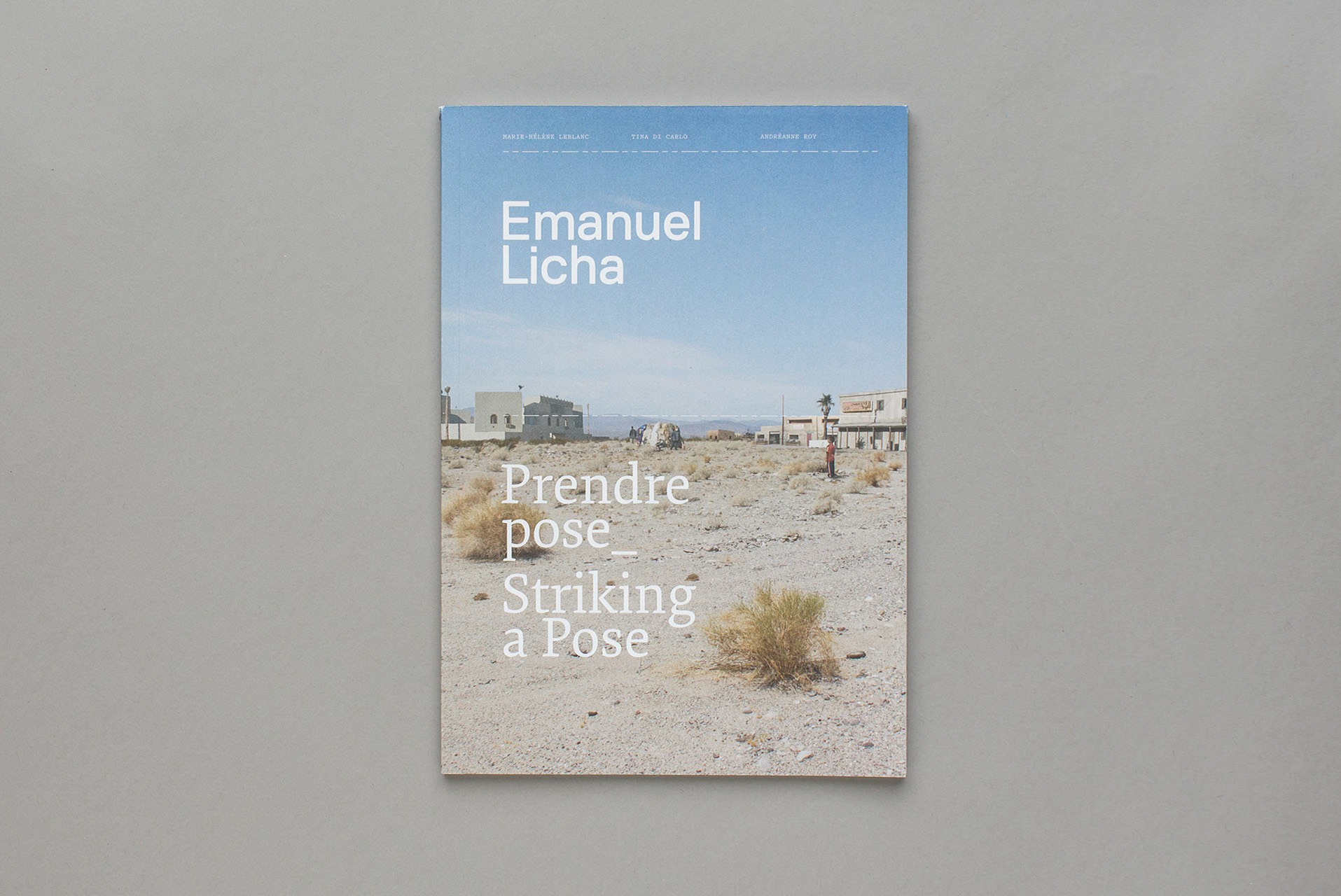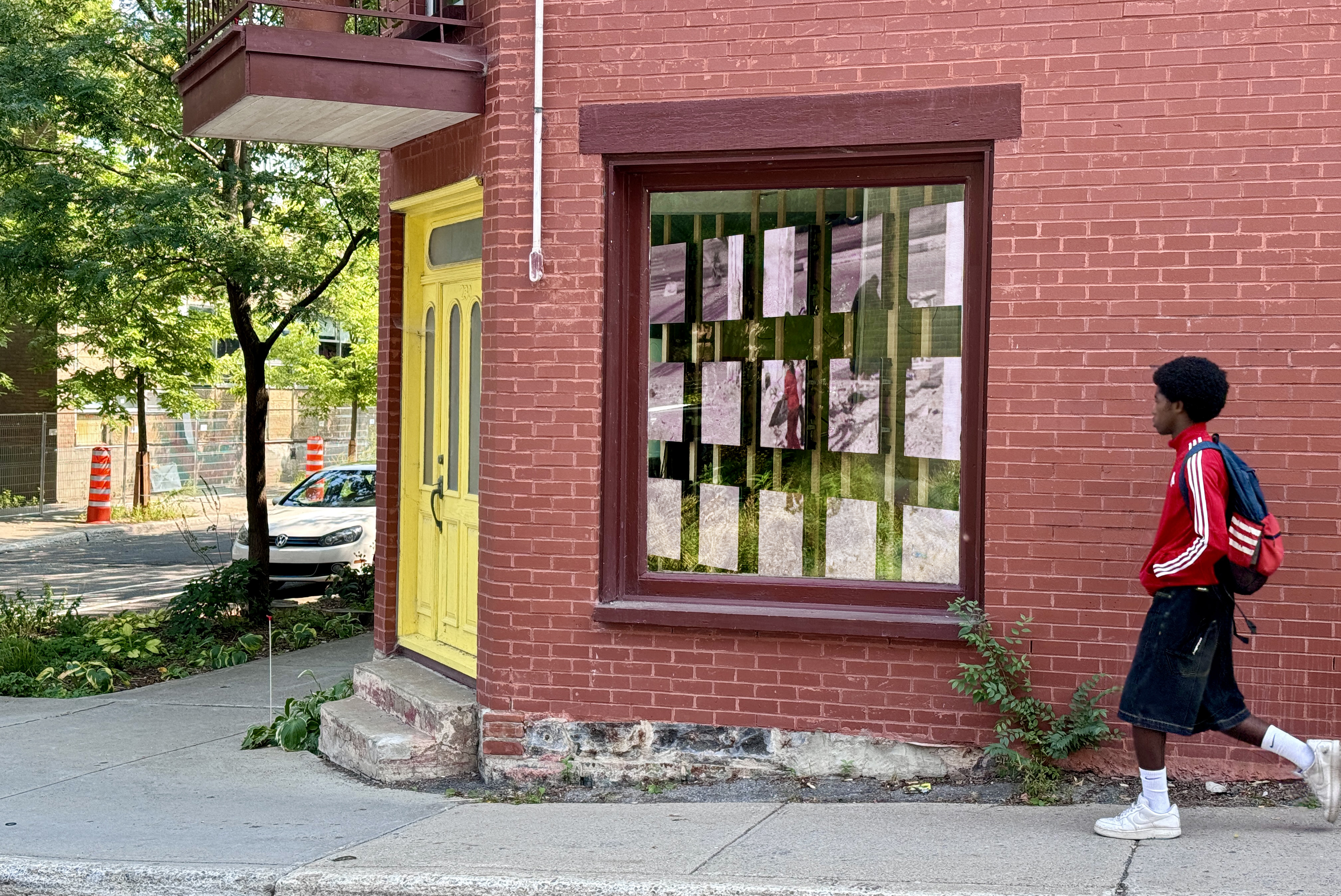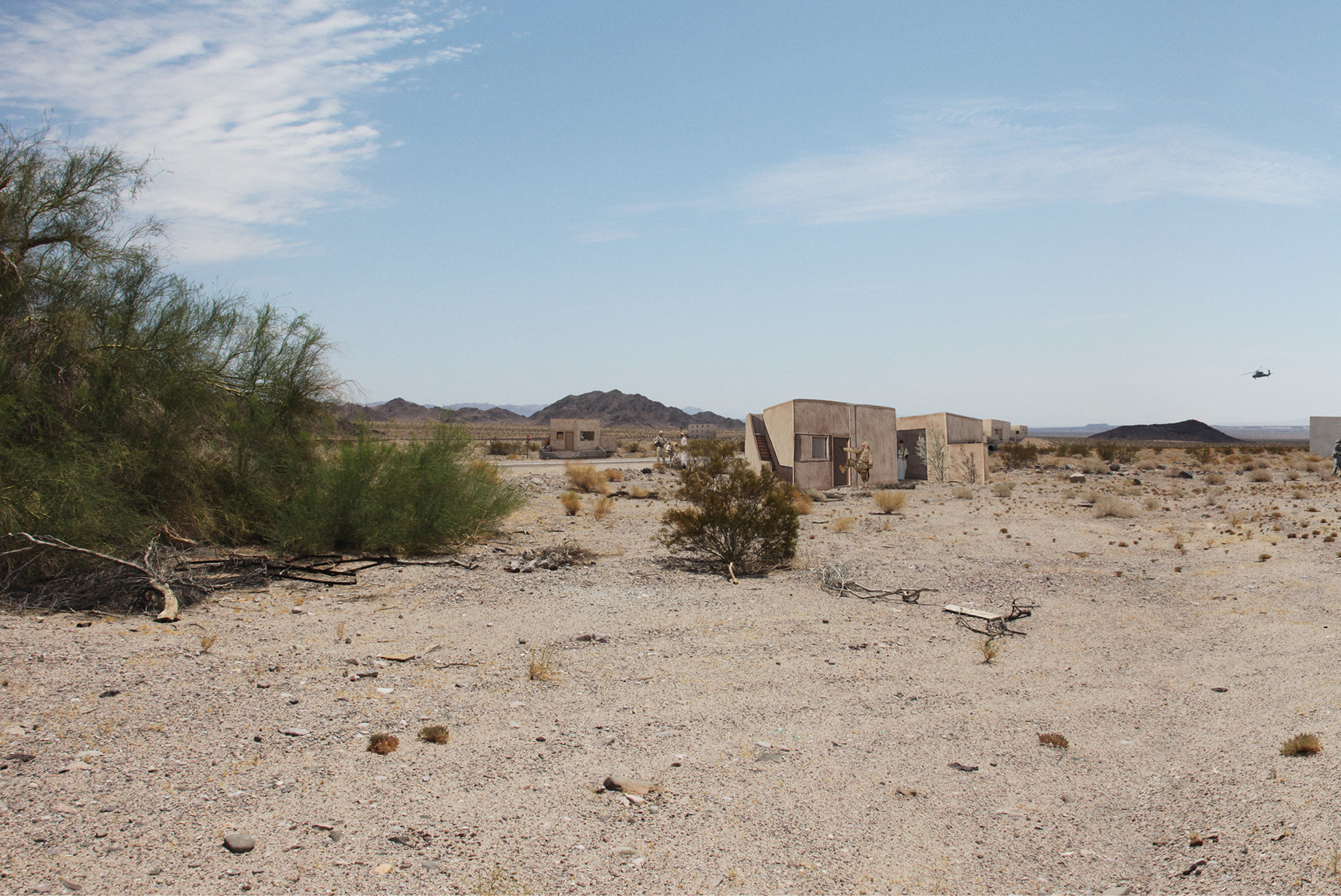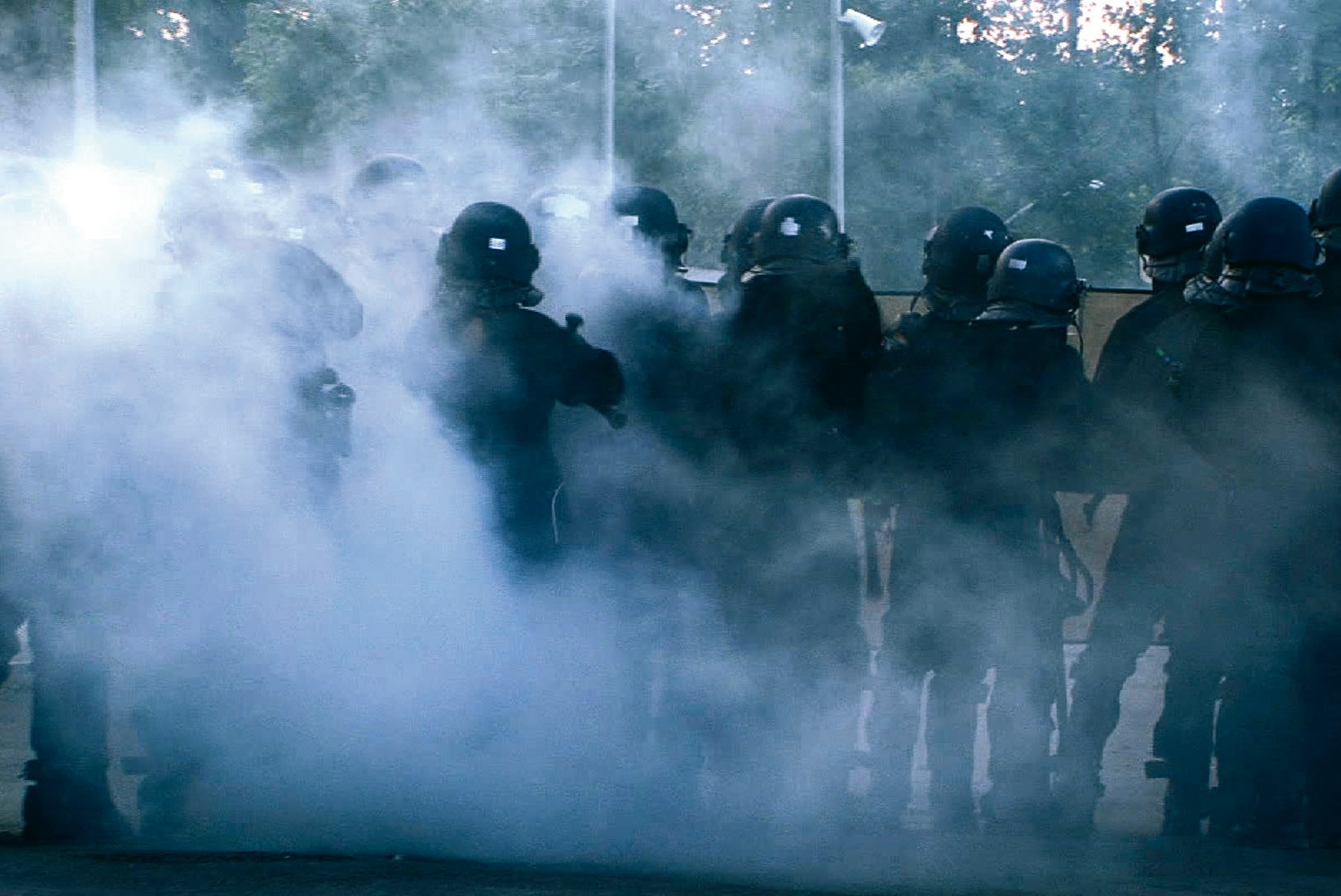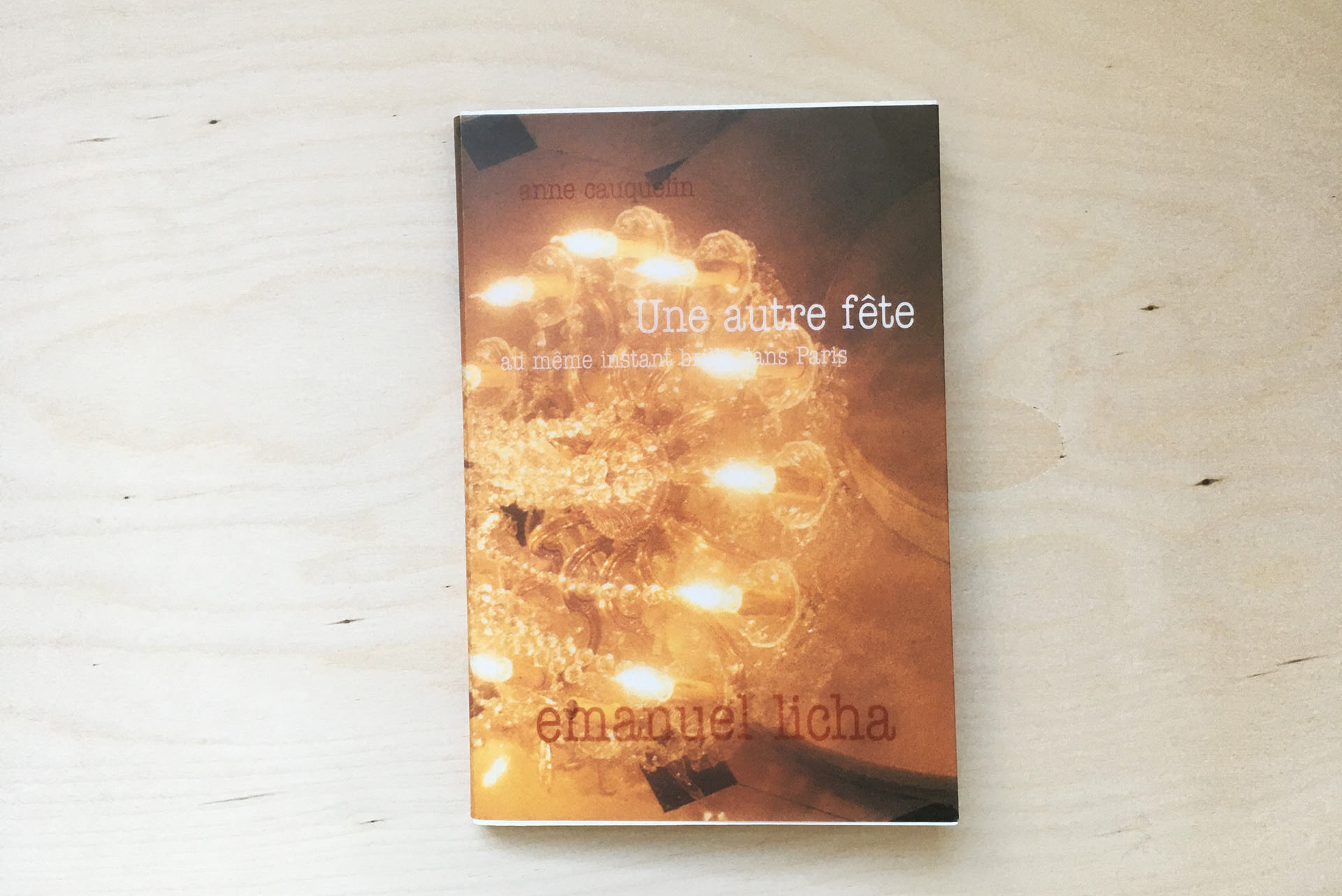Film installation, 2010.
Why Photogenic? is the title of a dispositif that comprises an architectural installation, a visual caption and the video Mirages in a 2-channel video version.
Why Photogenic? is an architectural dispositif inspired from the actual site of Fort Irwin, a US Army training center that includes a mock Iraqi village. The dispositif is made of plywood and forces the spectator to go through the space in a pre-defined sequence. It is conceived as a viewing device, proposing a mise en abîme to the viewer, allowing him to perceive himself watching. It allows the viewer to approach Fort Irwin’s reality through the filter of three different kinds of media : mass-media, cinema, and architecture.
The first viewing station shows a 7mn video, considered as a ‘visual caption’ showing a spectator watching a computer screen. A window is open showing a news broadcast produced by a local californian TV network (KCal), reporting live from Fort Irwin. This is how the spectator first learns about Fort Irwin : through the media perspective. The Why Photogenic? dispositif proposes to the viewer to experiment a reconstitution of what it is to approach Fort Irwin
The spectator is then lead to another room, in which he will watch the two-channel video Mirages. The spectator watches the video through an opening in the wall which has the proportions of a movie screen (16:9). This opening makes an echo to two images shown in the video. One shows the observation deck from which journalists are encouraged to film the theatre of operations; the other shows the mock hotel room in which journalists are invited to stay when they report on Fort Irwin. The window in that room also has the proportions of a movie/TV screen, as if what the military wanted the journalists to film was already framed for them. those observation platforms confirm the idea that beyond the fact that Fort Irwin is a training camp for soldiers, it is also a training camp for viewers, where the spectator’s gaze is educated through the images produced by journalists. After watching the video, the spectator exits the dispositif through the 'back stage'.
Credits
Written, directed, filmed and edited by Emanuel Licha
Curator: Stephen Horne
Exhibition at the SBC Gallery, Montreal, May 2010
Curator: Stephen Horne
Exhibition at the SBC Gallery, Montreal, May 2010
Image credit: Ron Diamond
Installation filmique, 2010.
"Pourquoi photogénique?" est le titre d'un dispositif architectural intégrant un cartel visuel et la vidéo Mirages dans sa version 2 canaux.
Pourquoi photogénique? est un dispositif architectural inspiré du site du camp d'entraînement de l'armée américaine Fort Irwin, en californie, où l'on trouve une simulation de village irakien. Le dispositif est fabriqué de parois de bois et force le spectateur à parcourir l'espace dans une séquence pré-déterminée. C'est aussi un dispositif optique qui propose une mise en abîme au spectateur, lui permettant de s'observer regardant. Le spectateur approche la 'réalité' de Fort Irwin en passant par trois filtres: celui des mass-média avec le reportage d'introduction, le cinéma, et l'architecture.
La première station propose une vidéo de 7 min, fonctionnant comme un cartel visuel. Un spectateur regardant une vidéo sur un écran d'ordinateur est vu de dos. Il regarde un reportage sur Fort Irwin tourné par une chaîne de télévision locale (Kcal). On y voit deux journalistes en studio qui communiquent avec un troisième, "en direct" de Fort Irwin. C'est de cette façon, par les médias, que le spectateur prend d'abord connaissance de qui se passe à Fort Irwin. Le dispositif propose à la spectatrice d'expérimenter les différentes étapes d'approche de ce camp d'entraînement.
Dans une seconde étape, la spectatrice est amenée dans une autre salle, où elle peut voir la vidéo deux canaux Mirages. La vidéo se regarde depuis une ouverture dans la paroi de bois ayant les mêmes proportions qu'un écran de cinéma. Cette ouverture dans la paroi fait écho à deux images qui apparaissent dans la vidéo: la première montre la plateforme d'observation depuis laquelle les journalistes qui visitent le camp sont encouragés à filmer le 'théâtre des opérations'. L'autre image montre l'intérieur de la chambre d'hôtel où sont logés les journalistes: cet hôtel fait partie du décor du village reconstitué, offrant une vue sur la place principale du 'village', par une fenêtre qui a elle-même les proportions d'un écran de cinéma. Cette fenêtre offre aux journalistes une image déjà cadrée. Ces deux espaces confortent l'idée que Fort Irwin est non seulement un camp d'entraînement pour soldats, c'est aussi un camp d'entraînement pour spectateurs dont le regard est éduqué par les images des journalistes. Le spectateur sort du dispositif en passant par les 'coulisses' de l'installation.
Crédits
Scénario et réalisation: Emanuel Licha
Commissaire: Stephen Horne
Exposition à la galerie SBC, Montréal, mai 2010
Commissaire: Stephen Horne
Exposition à la galerie SBC, Montréal, mai 2010
Photo: Ron Diamond
Présentations
